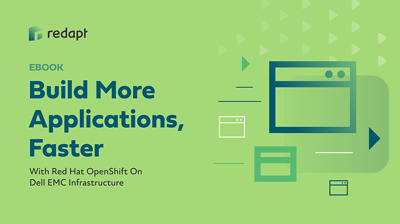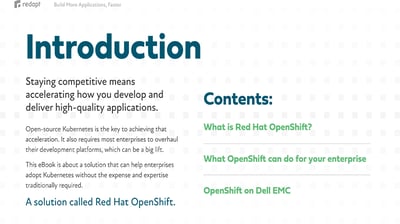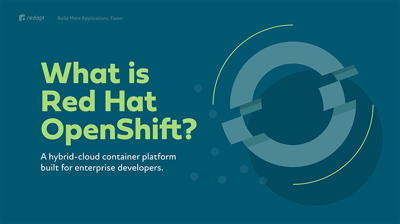Enterprises are changing the way they use technology in order to respond to increasing competition.
At the top of these changes are a move to DevOps and containerization for developing applications.
There are a number of benefits from shifting to DevOps for development, including faster time to market, higher quality products, and increased agility to remain competitive.
Download Now: Build More Applications, Faster (with Red Hat OpenShift on Dell EMC Infrastructure)
The question every enterprise looking to make this move faces, however, is whether to go about it on their own.
Three questions to ask before building your own DevOps
1. Do you have the skills?
Not every enterprise has the talent or resources in-house to build their own DevOps environment. Management tools, CI/CD pipelines, embedded container registry—these are just some of the additions necessary to adopting cloud-based development.
2. Will you be cloud-only, multi-cloud, or hybrid?
Whether you plan to utilize a single cloud platform, multiple clouds, or a mixture of on premises and the cloud will determine the tech stacks your development teams use for DevOps. So before going in, you need to make sure your teams are ready and willing to adjust.
3. Will you need production support?
Problems routinely pop up during development, so it’s critical that you have the support in-house—or access to outside help—in order to quickly address any issues as they arrive.

Determining the next steps
If you can answer the three questions above with confidence, you’ll likely be able to build out your own DevOps environment. If you’re not confident about your abilities or needs, however, then going with a provider of pre-integrated tool sets will be the way to go.
For that, one of the solutions we often recommend is Red Hat OpenShift and Dell EMC Ready Architecture.
OpenShift & Dell EMC
Red Hat OpenShift is an enterprise-ready platform designed to ease the adoption of Kubernetes and DevOps.
Not only does OpenShift deliver a complete and working platform right out of the box, it’s also supported by Red Hat’s world-class engineering team for production support.
With OpenShift, enterprises can quickly achieve DevOps adoption. And since it’s designed to be a hybrid cloud solution, OpenShift allows for DevOps on premises or on multiple clouds.
This not only provides flexibility, it makes it possible for development teams to continue using the tech stacks they are already most comfortable with—regardless of where development is taking place.
In addition, when combined with another tool we often recommend, the Dell EMC Ready Architecture platform, enterprises have the storage and networking configuration they need to greatly reduce the time necessary to move into the production phase of development.
For more on OpenShift and the Dell EMC Ready Architecture, download our free eBook Build More Applications, Faster (with Red Hat OpenShift on Dell EMC Infrastructure).


















